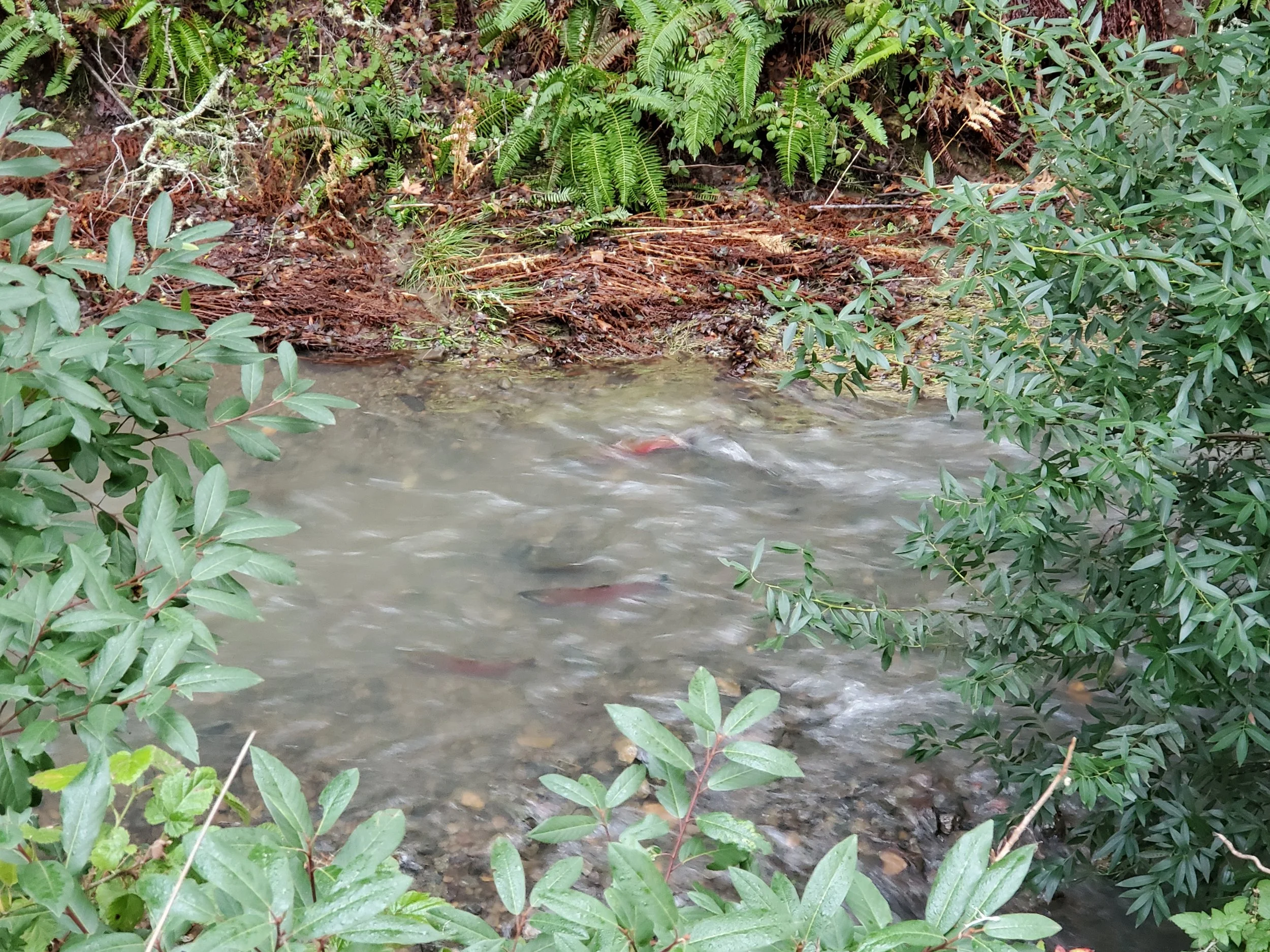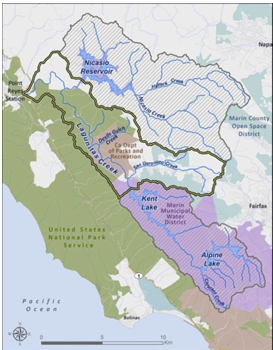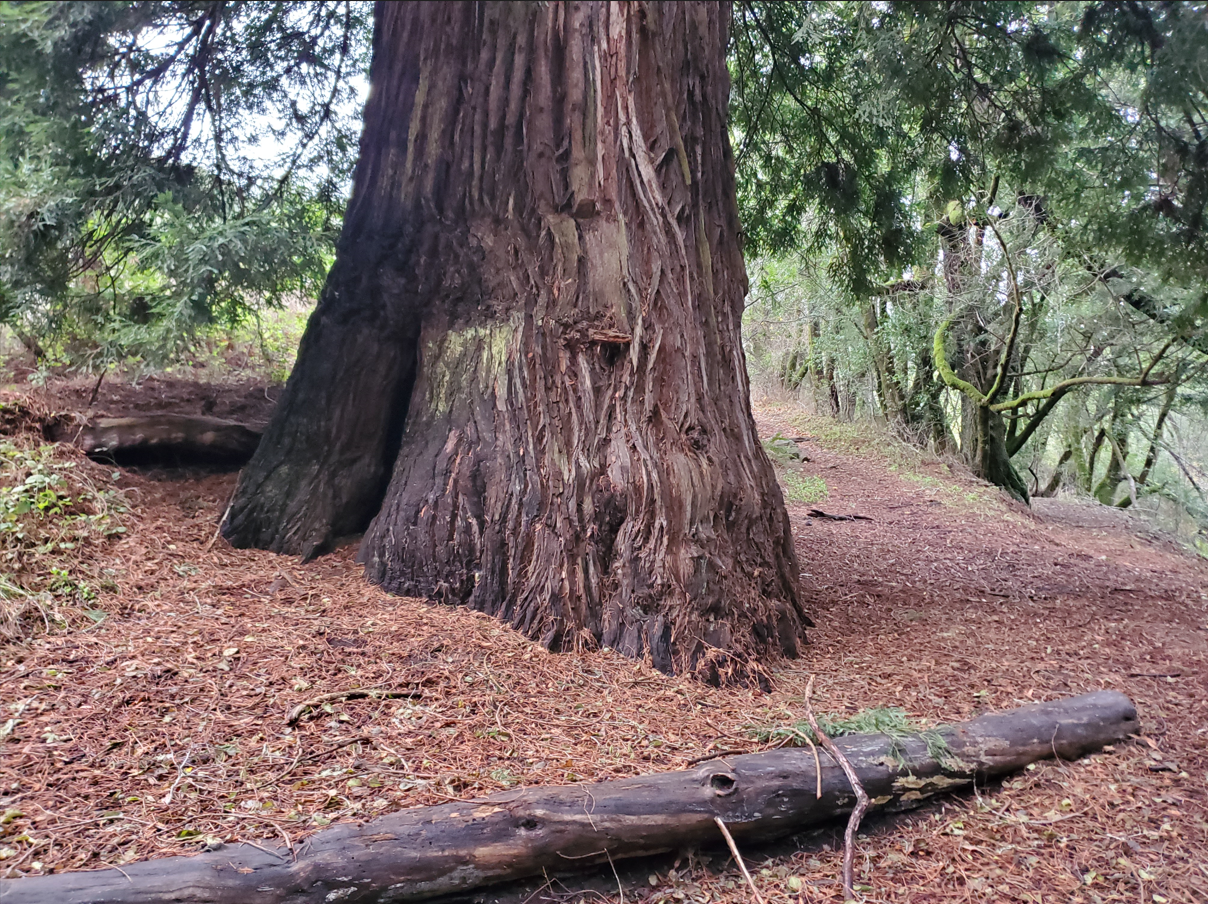River Favorites: Devil’s Gulch Creek
Signage at Devil’s Gulch. All photos provided by Greg Reis unless otherwise noted.
Devil’s Gulch Creek, in Samuel P. Taylor State Park, is a tributary of Lagunitas Creek, which flows into Tomales Bay from the wild north slopes of Mount Tamalpais. Lagunitas Creek hosts the largest remaining Coho salmon run in Central California. Devil’s Gulch is the most intimate place to see the Coho spawning—a trail along the creek gets you closer to this miracle of nature than anywhere on the Lagunitas mainstem.
In November 2024 there were record returns of Chinook salmon, and in December 2024 there was a 20-year-high for Coho salmon returning to the watershed. The cohort of fish that is in the freshwater creeks right now had great freshwater flows in 2021-2023, great ocean conditions, and is now having large November-December 2024 flows greeting their return. This year’s fish are also the offspring—three generations later—of the fish my family and I saw in Devil’s Gulch Creek on the day before my daughter was born.
Devil’s Gulch Coho salmon.
After parking in a large turnout on Sir Francis Drake Blvd, you walk up the paved group camp access road to the trail along Devil’s Gulch Creek. In December when conditions are good you begin to see spawning Coho salmon right away and can easily see over a dozen fish in a few minutes. The red males fight for position near the darkly-camouflaged-on-top but incredibly-colorful-on-bottom females digging the redds.
From the footbridge across the creek, you can hike or mountain bike to the gravesite of the Park’s namesake Taylors, the top of Mount Barnabe, or a seasonal waterfall. Trails on the far side of the creek are open again after a multi-year closure when the state invested in upgrades.
Devil’s Gulch Creek.
Devil’s Gulch footbridge.
The poet Kenneth Rexroth lived in a cabin in this canyon. The canyon is botanically interesting as well, with a hollow redwood big enough for kids to play in, the rare Western leatherwood, and a strong showing of the lovely California nutmeg on the trail to Stairstep Falls. Group campsites offer an opportunity for an overnight stay. My first visit to Devil’s Gulch many years ago was to a group campsite with friends following a sunset picnic dinner on Bolinas Ridge.
Unfortunately, Marin Water’s recent frantic search for more storage in the wake of the 2020-2022 drought has led it to consider building several new or enlarged dams—and it shockingly last year studied the possibility of damming Devil’s Gulch! Fortunately the saner heads on the Marin Water board prevailed and Devil’s Gulch is not on the short list, but other areas of Marin County creeks and farmland are still in danger of inundation.
Screenshot of a portion of a slide from a Marin Water presentation showing existing reservoirs in blue, proposed new reservoir areas green to red, including the Coho-bearing Devil’s Gulch Creek in Samuel P. Taylor State Park. For more on Marin Water’s Strategic Water Supply Roadmap see Strategic Water Supply Roadmap | Marin Water . For more on the opposition to it see Soulajule expansion would imperil a precious heritage - Point Reyes Light
Map of the Lagunitas Creek watershed, with the remaining undammed tributaries outlined in yellow and areas inaccessible to salmon cross-hatched, courtesy SWRCB 2014 (6_Staff_Report.pdf).
Redwood at Devil’s Gulch.







